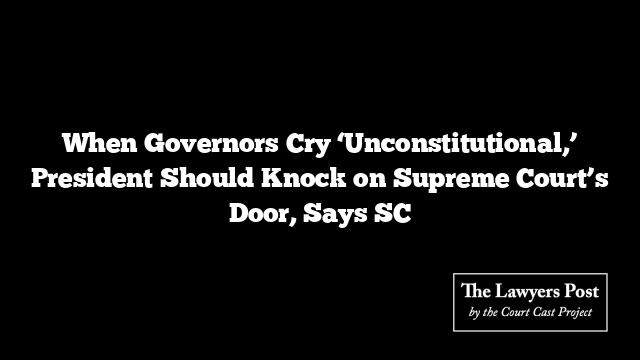In a sharp and significant observation tucked within its ruling in the Tamil Nadu Governor case, the Supreme Court has laid down a constitutional compass: if a Governor stalls a Bill by waving the red flag of unconstitutionality, the President of India would do well to walk the legal high road—straight to the Supreme Court for advice.
This recommendation isn’t just a gentle nudge. It draws its weight from Article 143 of the Constitution, which empowers the President to seek the Court’s advisory opinion on questions of law or fact that carry public importance. And when a Bill—passed by a State legislature—is tagged as potentially unconstitutional by a Governor and sent upstairs for presidential assent under Article 200, the Court believes that’s precisely the moment for the President to invoke Article 143.
A bench of Justices JB Pardiwala and R Mahadevan cut through the fog with clarity: it is the constitutional courts—not the executive—that have the final word on what is or isn’t constitutional. If there’s even a whiff of democratic peril in the Bill, the prudent path is clear—the President must defer to judicial wisdom.
The Court emphasized this isn’t about rubber-stamping or ceremonial gestures. It’s about safeguarding representative democracy and preventing the passage of laws that could later be gutted for violating the Constitution. The message is clear: assessing constitutionality requires a judicial lens, not an executive hunch.
Citing past constitutional commissions—the Sarkaria and Punchhi—the Court reinforced that both had recommended the same route. The logic? There’s no machinery at the state level to allow Governors to consult constitutional courts directly. The only bridge is through the President, and the President’s only real tool in such a scenario is Article 143.
In effect, the Supreme Court is saying: don’t gamble with democracy. If the Governor flags a Bill for being unconstitutional, the President should pause and consult—not just the Cabinet, but the Court. Otherwise, you risk letting a legally faulty law into the system, wasting time, money, and public trust.
And if the President decides not to follow the Supreme Court’s advice? The Court left room for that, too—but made it clear that any such decision must rest on sound policy grounds, not mere convenience or political impulse. Legal matters are the judiciary’s domain, and any divergence from its opinion must come with strong, reasoned justification.
This isn’t a binding mandate—it’s a constitutional caution. But make no mistake: the Supreme Court has drawn a bold line in the sand. If the question is constitutionality, the answer lies in court—not in Cabinet corridors.




